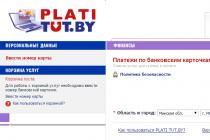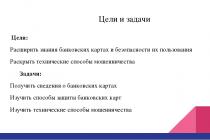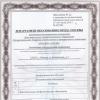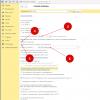On account 20 “Main production” production costs are taken into account. Closing account 20 in 1C 8.3 Accounting occurs automatically. There are several reasons why account 20 in 1C 8.3 Accounting 3.0 is not closed. In this article, read about 4 such reasons and how to eliminate them.
All production costs are divided into direct and indirect. Direct costs include costs that can be attributed to specific products. Indirect costs are costs that cannot be tied to the production of specific products.
In the debit of account 20, enterprises take into account their direct production costs:
- Material costs;
- Labor costs for workers;
- Calculation of contributions for wages;
- Depreciation of production equipment.
Quick transfer of accounting to BukhSoft
At the end of the month in 1C 8.3 Accounting, account 20 is automatically closed to accounts 43, 40, 90. To close the month without errors, you must:
- Set up accounting policies in 1C 8.3 Accounting to account for production of products and performance of production work and services;
- Configure payroll parameters for employees producing products;
- Correctly indicate item groups and divisions in production documents (invoice requirements, production reports for a shift);
- It is correct to take into account the balance of work in progress in 1C 8.3.
Step 1. Set up accounting policies in 1C 8.3 for production purposes
One of the reasons why account 20 is not closed may be incorrect setting of accounting policies. To set it up for production accounting, go to the “Main” section (1) and click on the “Accounting Policy” link (2). A window for setting it up will open.
In the field “Main cost accounting account” (3), indicate account 20.01 “Main production”.
In the settings window, check the boxes “Release of products” (4) and “Execution of work...” (5). In the “Costs are written off” field (6), select one of three values:
- "Excluding revenue." In this case, account 20 will be automatically closed regardless of the availability of revenue;
- "Including all proceeds." With this method, account 20 will be closed according to the item groups for which there was revenue;
- “Including revenue from manufacturing services only.” If you select this value, account 20 will be closed only after the document “Provision of production services” is completed.
Now the 1C 8.3 program understands that your organization is engaged in the production of products and the provision of production services, and will close account 20 at the close of the month. If your organization does not provide production services, do not check the box “Perform work...” (5).
 To close the month, go to the “Operations” section (7), and click on the “Month Closing” link (8).
To close the month, go to the “Operations” section (7), and click on the “Month Closing” link (8).

In the window that opens, select your organization (9), specify the period (10) and click the “Close the month” button (11). After successful completion, the operation “Closing accounts 20, 23, 25, 26” (12) will be colored green. By clicking on it, you can see the transactions for closing account 20.

Step 2. Set up wage accounting methods in production in 1C 8.3
The wages of workers in production departments and insurance premiums for them should be taken into account in account 20. It is very important to correctly attribute the wages of workers to the products produced. To do this, use the reference book “Nomenclature Groups”. With its help, all manufactured products are combined into several main categories. For example, in a furniture factory that produces several hundred types of products, such groups could be:
- Cabinets;
- Tables;
- Chairs.
This enlarged grouping allows you to distribute production costs to each product group.
Creating a new value "Payroll accounting method"
When calculating wages for production workers, it is very important to indicate the correct nomenclature group. Otherwise, account 20 may not be closed. To set up payroll accounting, go to the “Salaries and Personnel” section (1) and click on the “Salary Settings” link (2).

In the settings window, go to the “Reflection in accounting” section (3) and click on the link “Salary accounting methods” (4). The “Salary Accounting Methods” window will open.

In the window that opens, you see a list of all previously created payroll methods. How to create a new method, for example, for calculating wages for employees involved in the production of cabinets? To do this, click the “Create” button (5).

In the window that opens, select the account “20.01” (6), in the “Item groups” (7) field, select the desired value, for example, “Cabinets”. In the cost items (8), indicate the required item. To save the setting, click the “Save and close” button (9). Next, you need to create a new value for this method in the “Accruals” directory.

Creating a new accrual type
Now create a new value in the “Accrual” reference book. To do this, in the salary settings window, click the “Accruals” button (10).

Here you see a list of all previously created payroll types.
To create a new accrual type, click the “Create” button (11). A window will open to create a new setting.

Here, indicate the name of the new accrual (12), the indicator for personal income tax (13), select the indicator for taxation of insurance premiums (14), and the type of expense for taxation (15). In “Reflection method” (16), indicate the created method of reflecting salaries. To save the value, click the “Save and close” button (17). For each item group, you need to create your own accrual type and use it to reflect the salaries of production workers. If there was a production of products according to the item groups “Tables” and “Cabinets”, then salary calculations also need to be formed according to these item groups. If you calculate wages for another item group, then account 20 will not be closed.

Step 3. Main mistakes when generating production documents in 1C 8.3
Inconsistency between the analytics in the invoice requirement and the production report
When creating production documents in 1C 8.3, pay special attention to filling out the “Cost division” and “Item group” fields. For one type of product produced in one department, these indicators in the documents “Requirement-invoice” and “Production report for the shift” must be the same.
In other words, if you indicated the “Furniture Shop” division and the “Cabinets” product group in the invoice request when transferring materials to production, then when producing products from these materials, also indicate the “Furniture Shop” division and the “Cabinets” product group. Otherwise, when closing a month in 1C 8.3, an error may occur. The following message will appear on the screen:

If, when transferring materials, you do not know exactly what products you will produce, then there are two solutions:
- After releasing the product, go to the invoice requirement and correct the item group to the correct one;
- Use a larger nomenclature group. For example, instead of “Cabinets,” indicate “Furniture.” The fewer item groups, the easier it is to keep records, but at the same time, the detail of expenses in reports is lost. Choose for yourself the optimal number of item groups, which will allow you to take into account the interests of accounting and management accounting.
Lack of production (materials were transferred, but there was no production)
If in your accounting policy there is a checkmark opposite the inscription “Performance of work, provision of services to customers” (1) and below it is indicated “Excluding revenue” (2), then account 20 will be closed regardless of whether there was a production release or not. Attention!!! This checkbox should be included in the accounting policies of only those organizations that actually provide such services. If your company is engaged only in the production of products, then account 20 should be closed only if there is a production of products.

If in 1C 8.3 Accounting 3.0 the 20th account is not closed, then perhaps the reason is that there was no production. In this case, account 20 will be closed in the following periods when the production is issued. If in a certain period materials were transferred to production, but there was no production, an account balance of 20 arises, or in other words, work in progress. In the balance sheet you will see this balance as the debit balance of account 20 at the end of the month (3).

Step 4. Take into account the balance of work in progress using the document “WIP Inventory”
Account 20 does not have to be closed in all cases. Manufacturing enterprises often have balances of work in progress in this account. Program 1C 8.3 Accounting does not make calculations related to work in progress. If your enterprise has materials transferred to production, but not processed, and also if you have incurred other direct costs not included in, then you need to account for the cost of these materials and costs as work in progress. This cost should be reflected as the balance at the end of the period in the debit of account 20. In the previous step, we considered the simple case of work in progress, when there was no production at all during the reporting period. How to reflect the balance of work in progress in other cases in 1C 8.3? For this purpose, 1C 8.3 Accounting provides a special document - “Inventory of work in progress.” To create it, go to the “Production” section (1) and click on the “Refinery Inventory” link (2). A window with previously created documents will open.

In the window that opens, click the “Create” button (3). A form will open to fill out.

In the “WIP Inventory” document, indicate:
- Your organization (4);
- Cost Account (5);
- Document date (6);
- A division in which there is a balance of work in progress (7).
- The nomenclature group according to which the WIP arose (9);
- The cost of work in progress for this group in accounting and tax accounting (10). You have to calculate it yourself.
To reflect the document in accounting, click the “Post and close” button (11).

After posting the “WIP Inventory” document and closing the period, on account 20 you will see the balance at the end of the period for each item group specified in the inventory document. The balance amount will also correspond to the amount reflected in this document.
As part of the instructions on how to close account 20, as well as other cost accounts - 23, 25, 26 in 1C: Accounting 8.3, it should immediately be noted that when checking this operation at the end of the month, the balances on accounts 25 and 26 * at the end there should not be a month; on 20 and 23, on the contrary, there may be a balance for the amount of work in progress, work or services.
*In tax accounting, until December 31, account 26 can be closed with a balance for standardized expenses (for example, advertising expenses).
From the point of view of the cost of goods produced, all expenses are classified as direct or indirect*. The first of them can, without a doubt, be included in the production process of specific types of goods, that is, they can be consumables, salaries of key production personnel, etc. The accounts of such expenses can be viewed in the “Nomenclature group” section, but indirect ones cannot be, because they cannot be attributed to the initial cost of a certain type of product. They are usually attributed, for example, to administrative expenses, payment for the work of the administrative and managerial level, etc.
*This distinction is typical primarily for the accounting of industrial companies.
Closing cost accounts at the end of the month
Closing the 25th account, as well as 20, 23 and 26, is carried out through the corresponding regulated operation, which is located in the section “Operations/Period Closing/Month Closing” or “Operations/Period Closing/Routine Operations”.
Displaying both types of expenses in accounting
The table “Settings for reflecting and writing off expenses in accounting” (below) contains settings for both types of expenses in accounting, which are located in the “Main/Accounting policies” section.


Commercial structures whose business is based on services to manufacturers, check the box next to “Performance of work/provision of services...”, to configure “Costs are written off” according to one of the options:
- "Excluding revenue": from Kt 20 to Dt 90.02, i.e. even if there is no turnover on account 90.01.
- “Including all revenue”: from Kt 20 to Dt account 90.02 in the context of the item groupings for which it was.
- “Including revenue from production services only”: can be written off after registration of the issue through an act of services performed.

Manufacturers themselves must mark for execution "Output".

After these steps, a set of switches will become available “General business expenses are included”:




Thus, indirect expenses from Kt 26 will be written off to Dt of direct accounts - 20 or 23 (in the second case, at the end of the month, additional expenses will be automatically written off to Dt 20, and then from Kt 20 to 40 or 43).

If account 25 is used to display indirect expenses in a manufacturing company, then you need to establish a rule for posting them on direct accounts using the link to the posting methods discussed above. According to the accounting methodology, from 25 they are posted to Dt 20 or 23. Similarly, in the case of distribution to 23, at the end of the month the costs will automatically be written off to Dt 20, and then closed at 40 or 43.

That is, when closing the month, indirect expenses are first written off from Kt 26 to Dt 90.08 (in case of write-off using the direct costing method) or from Kt 26 to Dt 20 or 23 (according to the posting rules, if any have been established). Costs from 25 will be written off in Dt 20 or 23 according to the redistribution rules. Direct items are written off by item groups to cost.
Expenses in tax accounting
The list of direct expenses attributed to production is in the section “Main/Accounting policies/Setting up taxes and reports/Income tax/List of direct expenses.”




Expenses not listed among direct expenses will be considered indirect in tax accounting and will be written off on 90.08, and direct expenses will be written off on 40.
Closing a month includes several routine operations, such as: calculations of depreciation, cost calculations, etc. These operations are reflected in a strict sequence, violation of which leads to errors, as a result of which the operation to close the month cannot be completed.
The Month End Assistant allows you to perform the following operations, such as:
establish the correct sequence of operations when closing the month;
partial closure of the month;
canceling the month end;
partial cancellation of the month closing operation;
refuse to close the month in the current period;
generate reports explaining calculations and reflecting the results of routine operations;
viewing the results of performing a routine operation;
draw up a detailed report on the completion of all operations related to the closing of the month.
When closing expense accounts 20, 23, 25, 26, the correct reflection of business transactions is checked. As a result of this check, incorrect turnovers and balances in production cost accounts and incorrect data in registers may be detected. In this situation, the closing of cost accounts cannot be carried out, hence error messages appear. Below are the most common errors that occur when trying to perform the “end month” operation.
No or not reflected production of products, provision of services or balances of work in progress
When closing cost accounts 20, 23, 25, 26, the message is displayed: “Product output, provision of services or WIP balances are not reflected.” It is necessary to check how the basis for the distribution of direct expenses was set in the accounting policy (menu Enterprise → Accounting policy → Accounting policy of organizations, Production tab). The distribution base for direct costs can be: Based on the planned cost of production, Based on revenue.

If the distribution of direct costs is carried out according to the planned cost of production, then it is necessary to check whether the planned cost is equal to zero.
To do this, you need to generate a report Analysis of account 20(23) with detailing by subdivisions and Nomenclature groups, as well as check the compliance of the amounts of current expenses (debit turnover) and the amounts of the planned cost of production (credit turnover).

In this case, the debit and credit turnovers must be non-zero. If there is no turnover on the loan (zero), it follows that there was no production, then you need to reflect the balances of work in progress using the document “Inventory of work in progress.”
When direct expenses are distributed according to revenue, you need to check whether revenue for a given period is equal to zero. To do this, you need to generate a report “Analysis of subconto” with the subconto type Nomenclature groups, and also check the presence of turnover on accounts 90 and 20.23.

If no services were provided during the reporting period, then it is necessary to reflect the balances of work in progress using the document “Inventory of work in progress.”
The order of divisions is not established
If the operations of closing cost accounts are determined manually (Accounting policy, tab Release of products, services), then this sequence must be specified. To do this, you need to create a document “Setting the order of departments for closing cost accounts.” If such a document has already been created, it may contain irrelevant data. In order to correct this error, you need to create a new document with the current date, automatically filling out the document using the “fill” button


Cost analytics is not filled out or filled out incorrectly
To correctly close cost accounts, it is very important to correctly indicate all objects of analytical cost accounting when reflecting expenses and output. To check, you need to generate a report: Turnover balance sheet for account 20, 23, 25, 26 with details for all types of subaccounts.
In the debit turnover of accounts 20, 23, the following details are required to be filled in: Division, Nomenclature group, Cost item. For turnover on the credit of accounts 20, 23 - Division, Nomenclature group. For turnovers on the debit of accounts 25, 26 - Division, Cost Item.
20 the account is not closed when the Subconto column in the reflection of the sale of services in the document Sales of goods and services on the Services tab is not filled in. To check whether the Subconto column is filled, you need to look at the records of the accumulation register Sales of services and check whether the Nomenclature group column is filled.


When closing expense accounts 20, 23, 25, 26, the following message may be displayed: “The item group for the issue is incorrectly specified.” The same item group cannot be used in the documents “Sales of goods and services” on the Services tab in the Subconto column and in the documents “Act on the provision of production services” and “Production report for the shift”
In order to check the correctness of the specified nomenclature groups for product output, it is necessary to compare the entries in the accumulation register “Product output at planned prices (accounting)” in the Nomenclature group column, as well as in the accumulation register “Sales of services in the Nomenclature group column”.
The counter issue accounting register is not filled in
If your organization has a counter issue, then in order to correctly close costly accounts, you must enter entries in the “Counter Issue” information register.
Counter output is usually present if products produced in the current period are written off as production expenses. This can be checked using the Account Analysis report for accounts 20, 23, 25, 26. If the Debit report contains account 43, then there may be a counter issue.
Perform the “closing the month” operation by clicking the “perform month closing” button

Closing a month includes several routine operations, such as: calculations of depreciation, cost calculations, etc. These operations are reflected in a strict sequence, violation of which leads to errors, as a result of which the operation to close the month cannot be completed.
The Month End Assistant allows you to perform the following operations, such as:
establish the correct sequence of operations when closing the month;
partial closure of the month;
canceling the month end;
partial cancellation of the month closing operation;
refuse to close the month in the current period;
generate reports explaining calculations and reflecting the results of routine operations;
viewing the results of performing a routine operation;
draw up a detailed report on the completion of all operations related to the closing of the month.
When closing expense accounts 20, 23, 25, 26, the correct reflection of business transactions is checked. As a result of this check, incorrect turnovers and balances in production cost accounts and incorrect data in registers may be detected. In this situation, the closing of cost accounts cannot be carried out, hence error messages appear. Below are the most common errors that occur when trying to perform the “end month” operation.
No or not reflected production of products, provision of services or balances of work in progress
When closing cost accounts 20, 23, 25, 26, the message is displayed: “Product output, provision of services or WIP balances are not reflected.” It is necessary to check how the basis for the distribution of direct expenses was set in the accounting policy (menu Enterprise → Accounting policy → Accounting policy of organizations, Production tab). The distribution base for direct costs can be: Based on the planned cost of production, Based on revenue.

If the distribution of direct costs is carried out according to the planned cost of production, then it is necessary to check whether the planned cost is equal to zero.
To do this, you need to generate a report Analysis of account 20(23) with detailing by subdivisions and Nomenclature groups, as well as check the compliance of the amounts of current expenses (debit turnover) and the amounts of the planned cost of production (credit turnover).

In this case, the debit and credit turnovers must be non-zero. If there is no turnover on the loan (zero), it follows that there was no production, then you need to reflect the balances of work in progress using the document “Inventory of work in progress.”
When direct expenses are distributed according to revenue, you need to check whether revenue for a given period is equal to zero. To do this, you need to generate a report “Analysis of subconto” with the subconto type Nomenclature groups, and also check the presence of turnover on accounts 90 and 20.23.

If no services were provided during the reporting period, then it is necessary to reflect the balances of work in progress using the document “Inventory of work in progress.”
The order of divisions is not established
If the operations of closing cost accounts are determined manually (Accounting policy, tab Release of products, services), then this sequence must be specified. To do this, you need to create a document “Setting the order of departments for closing cost accounts.” If such a document has already been created, it may contain irrelevant data. In order to correct this error, you need to create a new document with the current date, automatically filling out the document using the “fill” button


Cost analytics is not filled out or filled out incorrectly
To correctly close cost accounts, it is very important to correctly indicate all objects of analytical cost accounting when reflecting expenses and output. To check, you need to generate a report: Turnover balance sheet for account 20, 23, 25, 26 with details for all types of subaccounts.
In the debit turnover of accounts 20, 23, the following details are required to be filled in: Division, Nomenclature group, Cost item. For turnover on the credit of accounts 20, 23 - Division, Nomenclature group. For turnovers on the debit of accounts 25, 26 - Division, Cost Item.
20 the account is not closed when the Subconto column in the reflection of the sale of services in the document Sales of goods and services on the Services tab is not filled in. To check whether the Subconto column is filled, you need to look at the records of the accumulation register Sales of services and check whether the Nomenclature group column is filled.


When closing expense accounts 20, 23, 25, 26, the following message may be displayed: “The item group for the issue is incorrectly specified.” The same item group cannot be used in the documents “Sales of goods and services” on the Services tab in the Subconto column and in the documents “Act on the provision of production services” and “Production report for the shift”
In order to check the correctness of the specified nomenclature groups for product output, it is necessary to compare the entries in the accumulation register “Product output at planned prices (accounting)” in the Nomenclature group column, as well as in the accumulation register “Sales of services in the Nomenclature group column”.
The counter issue accounting register is not filled in
If your organization has a counter issue, then in order to correctly close costly accounts, you must enter entries in the “Counter Issue” information register.
Counter output is usually present if products produced in the current period are written off as production expenses. This can be checked using the Account Analysis report for accounts 20, 23, 25, 26. If the Debit report contains account 43, then there may be a counter issue.
Perform the “closing the month” operation by clicking the “perform month closing” button

We talked about what accounting account 20 “Main production” is intended for, as well as about typical accounting entries using this account in ours. In this material we will dwell in more detail on closing account 20.
When the account is closed 20
Considering that the debit of account 20 collects costs for the production of products, performance of work, provision of services, account 20 is closed when production of products is completed, work is performed or services are provided. Closing account 20 means reflecting it in the accounting entry for the loan. When closing account 20 in connection with the completion of production, performance of work or provision of services, accounting entries may be as follows (Order of the Ministry of Finance dated October 31, 2000 No. 94n):
After the above entries, account 20 can either be reset to zero or maintain a certain debit balance. In the latter case, they speak of the presence of work in progress (WIP) at the reporting date.
Let us remind you that work in progress is products or work that have not passed all stages (phases, redistributions) provided for by the technological process, as well as incomplete products that have not passed testing and technical acceptance (clause 63 of Order of the Ministry of Finance dated July 29, 1998 No. 34n).
Considering that analytical accounting on account 20 is carried out, including by types of products, works or services, for certain types of products or works the closure of account 20 may be reflected, while for others the balance will nevertheless be reflected in the form of work in progress.
At the same time, crediting account 20 does not always mean that products have been produced, work has been performed or services have been provided.
For example, when a defect is detected in the main production, it is written off from account 20 with the following accounting entry:
Debit account 28 “Defects in production” - Credit account 20
And, for example, canceled production orders, the costs of which were collected in the debit of account 20, are included in the financial results of the organization with the following posting:
Debit account 91 “Other income and expenses”, subaccount “Other expenses” - Credit account 20















